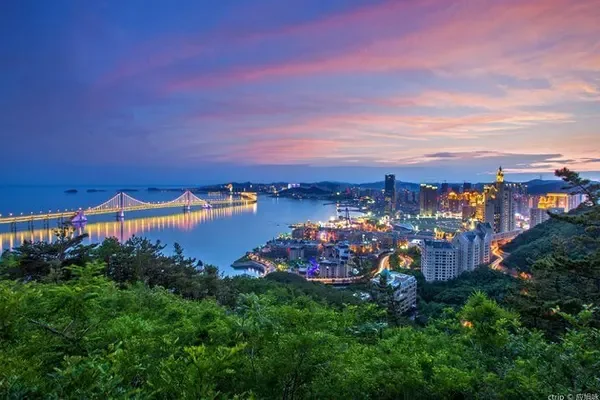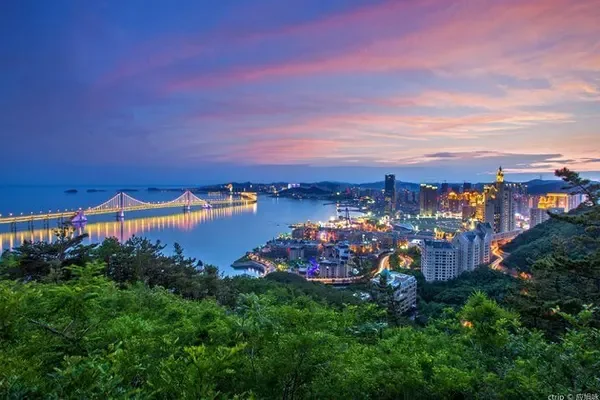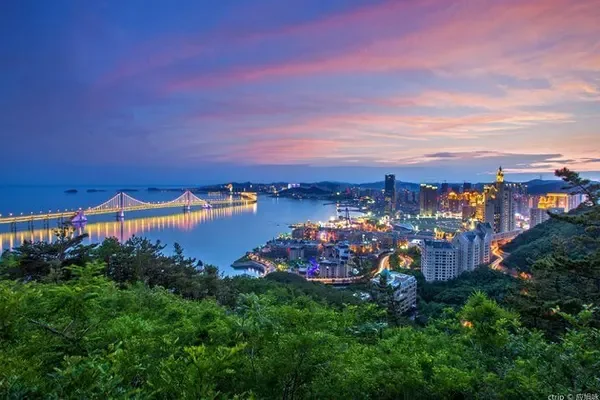In May 2013 and April 2014, the reporter went to the Yanshan World Cup Stadium in Seoul, South Korea with the Beijing Guoan football team twice to cheer for the AFC Champions League away game between the Guoan team and the Seoul FC team. Every game is a six-day memorable tour of cheering and traveling.

I remember that the first time I set off from Beijing to watch the game was May 19, 2013. At 16:00 on the same day, reporters and hundreds of fans from all over the capital who were honored to be selected as the "Guoan Cheering Group" gathered at the Beijing Workers Stadium. Before leaving, All the fans took the first group photo before the trip in front of the banner with the theme of "Fighting for Dreams and Victory", and then took four buses and drove to Tianjin Airport with joy all the way.

At noon on May 20th, after the Guoan fan group flew from Tianjin Binhai International Airport to Incheon Airport in South Korea, Gao Chao, the then general manager of Beijing Guoan Football Club, went to the airport to welcome the fans and took a group photo with the fans of the Guoan fan group As a souvenir, it was warmly welcomed by the fans. Everyone said that they must go all out to support the Beijing Guoan Football Team's away match with Seoul FC. Guaranteed to "watch the game in a civilized way! Cheer for the Beijing Guoan team! Cheer for the hard work of the players on both sides!"

Guoan fans cheered the team from the airport to the Olympic Park Hotel in Seoul where they stayed. The hotel is a legacy of the 24th Seoul Olympic Games. This building is the work of Kim Seok-chul, the architect who designed the Art Palace. The overall building is related by two circles connecting cities and one plane, which visualizes the word "8" in 1988, the Olympic year.

In the afternoon, the fans started their sightseeing tour in Seoul. Li Bin, the leader of the reporter's team, treats people with modesty and gentleness, and works meticulously. He works closely with the tour guide in Seoul, Mr. Jin, who quickly became friends with the fans, and jointly serves as the team's service. Under the guidance of Mr. Jin, he first visited the famous Gwanghwamun Square in Seoul.

Seoul Gwanghwamun Square
Gwanghwamun, the central district of Seoul with a history of 600 years, is backed by the beautiful and majestic Bukhan Mountain and the ancient architectural complex Gyeongbokgung Palace. Rokjo Street is a street created during the construction of the Hanyang City during the Joseon King Taejo era (1392-1398), and it is an important relic for understanding road construction methods in the Joseon era.

Walking up the winding slope of Haechi Square, you can see the bronze statue of General Yi Sun-sin, the fourth emperor of the Joseon Dynasty, Sejong the Great, on Gwanghwamun Square, surrounded by various grounds, mirrors, etc. fountain. Looking at the left and right sides of the square from the bronze statue, there are waterways flowing along Liujo Street in the Joseon Dynasty on both sides. The main content of Korean history from the founding of Joseon in 1392 to 2008 is engraved in the waterway. The water flow meets the fountain and flows to Cheonggyecheon.

Cheonggyecheon is a landscape combining nature and humanity. It is a river that runs through the north and south of Seoul. However, Cheonggyecheon used to be a river heavily polluted by mud and garbage covering the riverbed, dirty wooden huts erected along the riverside, and sewage discharge. After several years of rectification, it finally restored the current Qingxichuan's beautiful and pleasant appearance.

Today's Qingxichuan, the river is clear and beautiful. The two sides of the river not only create a comfortable leisure place for people, but also display some excellent pictures and paintings on both sides of the river, which really provides people with a place to experience culture and get close to nature. It is an ideal world to observe and study ecology. Walking along the banks of Cheonggyecheon, you can see parents strolling with their children, and young couples soaking their feet in the stream, sitting on the bank and chatting, relaxed and at ease. There are bridges of various shapes dotted above the small river, which complement each other with row upon row of skyscrapers on both sides.

The fans wandered here, while the cameras in their hands kept pressing the shutter, they did not forget to hold up the green banner of "Guoan will always strive for the first" that they carried with them, and posed in various happy poses. An unforgettable moment.

After finishing the tour of Gwanghwamun and Cheonggyecheon, the fan group continued to take a bus to the nearby Blue House and Gyeongbokgung Palace to pay their respects. After the car stopped, everyone got out and walked on a very quiet street. Because Qingwatai is the official residence of the president of South Korea, the roof of the official residence is covered with blue tiles, so it is called Qingwatai. The road between his official residence and Gyeongbokgung Palace is called Qingwatai Road.

Since this is a special area, it will make people feel a little different from the street atmosphere seen in other places. The streets are unusually quiet, with few vehicles, and since it is the presidential residence, the security is very tight. I saw guards in suits or police uniforms standing on the road, and the atmosphere was very strict. There are no shops here, and there are fewer pedestrians passing by, so it looks very quiet.

Coming to the square at the intersection of Xiaozi Road and Qingwadae Road, there is a phoenix stone statue symbolizing the head of state, and there are several groups of figure sculptures around the circular lawn. The reporter saw the shape of a family of three, and the lifelike characters showed the harmony and happiness of this family. Pass through the square and continue on to the Blue House. The Blue House is far away from the Shenwu Gate at the back door of Gyeongbokgung Palace. Qingwatai was originally the palace of the Goryeo Dynasty. After the Joseon Dynasty established its capital in Seoul (Seoul) in 1426, it was used as the back garden of Gyeongbokgung Palace. A piece of the king's pro-cultivated land.

There are about 150,000 blue tiles on the roof of the Blue House, which have not faded after more than 100 years of wind and rain. The main building is a small two-story building. There are the office of the president, the office of the wife of the president, the Niwang family for interviews, and the Baiyue room for about ten people to eat. The annex on the left is the Sejong's room for meetings and interviews, and the annex on the right is the general affairs office. Because it was not a public opening day, the fans did not enter the Blue House to visit, but entered Gyeongbokgung Palace from Shenwumen, and visited the Korean Folklore Museum in Gyeongbokgung Palace and the ancient architectural complex similar to the Forbidden City in Beijing - Gyeongbokgung Palace.

Gyeongbokgung Palace is one of the five major palaces in Seoul, South Korea during the Joseon Dynasty (1392-1910). It is also the main palace of the Joseon Dynasty. It is located at the foot of Beiyue Mountain and is the core of the urban planning of Seoul, the capital of South Korea. The name of Gyeongbokgung Palace was named by Jeong Do-jeon, the founding hero of the Joseon Dynasty, based on the word "Gyeongbokgung" in the Chinese poetry collection "Book of Songs" in "Gentleman Wannian, Jieer Jingbok". It is the palace of the new dynasty built when the ancestor of the Joseon Dynasty, Taejo Lee Sung-gye, moved the original capital of Goryeo in 1395. It has a history of 500 years.

Gyeongbokgung Palace, also known as "North Palace", is one of the largest and oldest palaces in Seoul and the political center of South Korea's late feudal society. Fans paid their respects to Gyeongbokgung Palace, and through the introduction of the tour guide Mr. Kim, they had a certain degree of understanding of the development history of South Korea from one side, which can be said to have benefited a lot.

On the morning of May 21, the fans continued their sightseeing trip in Seoul. First, they took a bus to visit Imjingak near the 38th Parallel in the Demilitarized Zone. Imjingak is a security tourist attraction built in 1972 to pray for the reunification of the Korean Peninsula. It is located 7 kilometers south of the military demarcation line, about 54 kilometers northwest of Seoul City Hall, and is the northernmost point that ordinary people can enter and exit. Imjingak is divided into one underground floor and three aboveground floors, and consists of a memorial hall, Unification Park, and various monuments. Here I also saw a promotion signboard for traveling to Panmunjom.

Around Imjingak, there are altars for overlooking the hometown and expressing the feeling of yearning for the ancestors - the altar of worship, and the exhibition hall displaying more than 400 various materials and pictorials related to the military, political, and social conditions of North Korea. Peace Bell, Peace Garden, Battle Monument of the Imjin River Area, Monument of U.S. Army Participation in the War, Tanks and Aircraft Used in the Korean War.

In addition, there are Freedom Bridge, "Railway Dream Run (Interruption Point of Gyeongui Line Railway)", and Burmese Aung San's Martyrdom Diplomatic Envoy's Memorial Pagoda. Sightseeing place.

The Wangbai Altar facing Imjingak is a place where people who have left their hometowns face their hometowns every year during the Spring Festival and Mid-Autumn Festival to worship. Behind the Altar of Worship is the Freedom Bridge, where North Korea repatriated South Korean prisoners after the two sides signed an armistice agreement in 1953.

In Linjinge, you can also see Korean soldiers in twos and threes and colorful ribbons hanging on the barbed wire, which reflects the relationship between this place and the war from one side.

Standing on the high platform of Linjinge, the fans can clearly observe the opposite North Korea through high-power binoculars. At this time, the reporter stood here and let go of his reverie, feeling more and more how important it is to cherish and maintain the hard-won peace in the war that has been far away from the smoke of gunpowder...

The fans had a rich and colorful experience during their trip to Seoul. After visiting Imjingak, they went to Goyang Kimchi School in Seoul to experience the fun of making kimchi and wearing Korean costumes. It is really fun to have a more direct and in-depth understanding of Korean food and national culture.

In Goyang Kimchi School, I read related introductions such as the nutritional value of kimchi, and witnessed the dazzling variety and methods of kimchi! It turns out that simple kimchi is actually a cultural symbol, which is amazing! Next, the fans sincerely became students. Under the one-by-one guidance of the school teachers, each fan carefully and independently completed his "first work" of kimchi. Not only that, the fans were very excited when they learned that the kimchi made by them would be collected and donated to the local welfare nursing home through the school. They were very happy to enjoy the fun of participating in public welfare activities while working in a foreign country. Be happy!

After finishing the experience of the Goyang Kimchi School, Mr. Jin led everyone to visit the Samsung Electronics Experience Exhibition Hall. Here, the fans felt the charm of modern electronic products. Afterwards, the most exciting moment finally came. All team members will go to Sangam Stadium, where the World Cup football match was held in Seoul, to watch the highlight of the night - the match between Guoan and Seoul FC.

Seoul World Cup Stadium (Seoul World Cup Stadium) is located in Mapo District, Seoul, South Korea. It is a football field dedicated to football matches. The stadium was built for the 2002 World Cup and was completed and opened in December 2001. It is famous for its unique architectural style. In 2003, the British Construction Industry Cultivation Committee rated the Seoul World Cup Stadium as one of the top ten "exciting stadiums" in the world through the world football professional magazine "World Football", and was also introduced as "many football stadiums have surpassed themselves and become Architecturally stunning object".

Looking down from the air, the Seoul World Cup Stadium is in the shape of a traditional kite and sailboat. The overall shape is symbolized by flying a kite towards victory, combining Korean traditional culture with the World Cup competition, reflecting the beauty of the stadium. With a capacity of 67,000 people, it is one of the largest dedicated football stadiums in Asia.

At the same time, it is also the venue for the opening ceremony of the 2002 World Cup and the first match between France and Senegal. It is also the venue for the semifinal match between South Korea and Germany. After the 2002 World Cup, the Seoul World Cup Stadium continued to be used as the venue for the South Korean national football team. Since 2004, the Seoul World Cup Stadium has also served as the home of FC Seoul.

After arriving at the stadium, although there was still a period of time before the game, the fans could no longer restrain their joy and excitement. Everyone was holding various cheering banners and scarves and taking pictures with the Rock Mountain Stadium as the background. Some fans also print the national flag or Guoan logo stickers on their faces. At this time, if you are among them, you can deeply feel the fire-like enthusiasm and exciting shock of the fans! They come for football, they come for national security! They come for dreams! They are here to win!

It’s finally time to enter the stadium. It’s not the first time for the reporter to go to the away game to cheer for the Guoan team. As early as October 8, 1995 in the last century, the reporter went to Dalian on a ship from Tanggu, Tianjin to watch Guoan’s away match against Dalian with Guoan fans. The game ended in a 0-0 draw. Although we still don't know the outcome of this game at this time, the feeling of coming to a foreign country to cheer for Guoan is definitely not what it used to be! The thrilling spectacle of such fervor and jubilation that you can't hold back yourself, and you're involuntarily drawn into it and become one of them!

The Guoan players entered the field, and the fans of the Guoan fan club frantically raised their hands and cheered for the Guoan team! The team members came to one side of the fan group stand and collectively bowed to express their gratitude to the fans who came from afar! In exchange for another round of deafening cheers. The names of Xu Yunlong, Yang Zhi, Ma Jiqi and other Guoan players were repeatedly shouted by the fans.

Although there are so many fans that it is difficult to name them, the reporter still wants to know some of their feelings as Guoan fans. Therefore, through interviews with Zhao Wancai, an older fan who works as a taxi driver, and a young According to a simple interview with Zhu Yang, a fan who works in a foreign company, watching Guoan football games has become an indispensable hobby in their lives.

What they said about the experience of watching the game related to this made the reporters awe-inspiring, and they couldn't help being deeply moved by their persistent belief in loving the Guoan team. Although the Guoan team lost in the game that night, the reporters rarely heard the fans insulting the players at the scene. On the contrary, facing the Guoan players who came to thank them after the game and showed a relatively depressed performance, they still cheered enthusiastically. ll. This may be the demeanor and quality of the Guoan tourism fans cheering group.

On May 22, after the most important event of this trip was to cheer for Guoan, the fans continued their two-day sightseeing trip to Seoul. I have visited Amusement World, Seoul Tower and Xianyu Island Ecological Park successively. And go to the famous Myeongdong Commercial Street in Seoul, the first Walkerhill in Asia that integrates food, leisure, entertainment and shopping, and fully appreciate the fun of food, entertainment and shopping.

After successfully completing the entire trip, the Guoan Tourism Fan Cheering Group embarked on the return journey on the afternoon of May 24th. Although the six days were short, the reporter saw that the fans have almost become a family with each other. Everyone gets along well with each other and enjoys themselves. Maybe this is the truth of "fans all over the world are family members"? When we broke up, the reporter saw that many fans were meeting. If there is a chance, they will come to cheer for Guoan again next year! The reporter thought: Although the outcome of a football team's game is important, the most important thing is to have such lovely fans who are willing to give without asking for anything in return! Because they are also a rare wealth... (Photo: Feng Ganyong)


